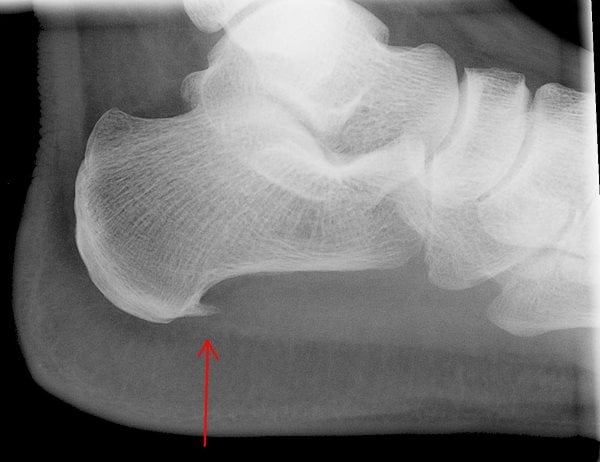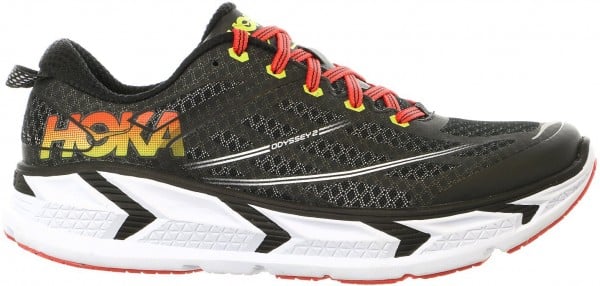How Are Heel Spurs and Plantar Fasciitis Connected?
People tend to mix up heel spurs and plantar fasciitis, as the symptoms can be similar. As well, they can affect a person at the same time. So, what is the difference between heel spurs and plantar fasciitis?
The Differences Between Heel Spurs and Plantar Fasciitis
Heel spurs are actually deposits of calcium within the plantar fascia. They occur near where it attaches to the calcaneus or heel bone. Because soft tissue doesn’t show well on an X-ray, it appears the spur is an isolated growth of bone.
But, in reality, these calcium deposits are part of the chronic soft-tissue disorder of plantar fasciitis. It involves significant changes to the tissue structure, which results in a break-down of the strong fibres of this tissue. As well, they deposit less desirable substances such as fat, mucus and, as we see below, calcium.
These structural abnormalities in the plantar fascia are also commonly seen in other soft-tissue disorders, such as chronic Achilles tendon and rotator cuff injuries.

Treatments For Heel Spurs And Plantar Fasciitis
There are options to help alleviate the pain of plantar fasciitis and heel spurs. Although it is not common for heel spurs to be painful, these calcium deposits almost always remain after symptoms resolve.
Custom orthotics provide arch support that reduces strain on the plantar fascia, as well as redistributing pressure away from the painful heel and into the middle of the foot.

In more severe cases, your pedorthist will add additional cushioning or pressure relieving accommodations in the orthotic.

Good footwear is also important to reduce the strain on the plantar fascia while you are walking. Look for footwear that has a pronounced rocker profile!
Notice where the front part of the shoe is curved upwards with a stiffer sole – don’t worry! Your pedorthist or fitting expert can guide you to find the best type of shoes for plantar fasciitis.
Night splints can ease morning pain by keeping a gentle stretch on your foot and calf muscles while you sleep.
Supportive in-home footwear like SOLE slides can be a nice option for easily contoured arch support when you need to spend prolonged periods of time on your feet at home – like that massive dinner party you need to prepare for!
Now that you’ve learned the difference between heel spurs and plantar fasciitis, learn more about these and other common foot conditions on the Kintec Blog!
Michael Ryan C.Ped.(C)., PhD
Certified Pedorthist
No Comments